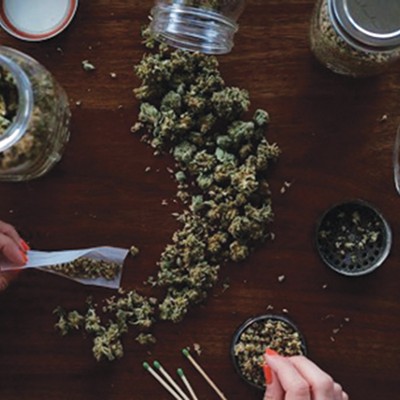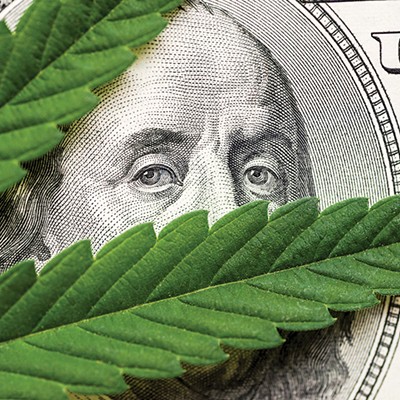Last month marked a milestone: Oregonians legalized our recreational (aka Adult Use) cannabis program via ballot initiative in November 2014, which went into effect on July 1, 2015. Since then, with some restrictions, it's been legal to grow, buy, use and transport cannabis.
Yet Oregon's relationship with Le Jazz Tobacco hardly started eight years ago. Let's look at how we got here, and where we could go, with the unofficial state plant: cannabis.
Oregon officially made cannabis illegal in 1923, until 1973, when then Oregon Governor Tom McCall signed the Oregon Decriminalization Bill, making Oregon the first state to decriminalize cannabis. The bill made possession of up to an ounce a misdemeanor instead of a felony, and offenders paid a fine instead of being jailed. (Growing remained a felony, proving that even 50 years ago, cannabis growers were given the shaft by the government. #hugacannabisgrower)
Some 25 years later, in 1998, Oregon passed Measure 67, the Oregon Medical Marijuana Act, which begat the Oregon Medical Marijuana Program. The citizens' initiative created one of the nation's first MMJ programs (California was first in 1996), allowing people with a doctor's recommendation to get cannabis directly from growers. This was sizable, in both how many were served (72,000 OMMP patients in 2015) and the licensing fees raised from patients and growers (In 2012, the state collected nearly $9 million).
After two failed ballot measures, Oregon passed a system for the establishment of medical cannabis stores, or "dispensaries." Only those with an OMMP card could enter and purchase a wide variety of flowers, edibles and other products, most of which had insane THC limits. Back then, 1,000-mg THC chocolate bars were a thing, and at times, a big mistake. Trust me.
In 2014, Oregon voters approved Measure 91, the Adult Use program we presently utilize. Those 21 and over now have a staggering array of products and strains, while charged a 20% sales tax for the privilege of buying them. (That works out to be a healthy $150 million in 2022, down from $178 million in 2021.)
In 2015, there was a sense of excitement and possibility for Oregon's new industry. I attended many conferences, meetings and events while hearing, often at great length, how an individual or brand was going to make their millions and "change the game."
One thing that changed was the OMMP. A combination of easier access for patients through dispensaries, as well as increased costs, rules, and restrictions, decimated the program. In January, the State reported 17,459 patients.
Growers became scarce, leaving low- and fixed-income patients without access to cheap and often free cannabis. There exists a deep, passionate and justified feeling that a lack of respect and understanding of the benefits of cannabis permeates the recreational industry. When medicine is commodified, different goals emerge.
But those seeking to grow for the new Oregon Adult Use market were in no short supply, and came from everywhere to stake their claim in the new green gold rush. The low cost and relative ease of obtaining a grow license resulted in — surprise — oversupply, leading the state to begin a moratorium on new grower applications in 2019. That has continued and is presently in place till the end of March 2024.
An increase in testing and licensing costs, coupled with historically low prices, hasn't been kind to growers, but did benefit those with simple cannabis possession charges. In 2022, then-Gov. Kate Brown pardoned over 47,000 individuals of cannabis convictions, and forgave $14 million in fines and fees. Increased access along with such expungements are solid victories for a system that eight years in remains seriously flawed.
Those flaws include a lack of social consumption permits, events and spaces, a regulatory agency which seemingly greatly favors alcohol over cannabis, restrictive rules that have made Oregon cannabis tourism a stifled undertaking, an under-represented industry which employs over 64,000 and a general feeling that what the state values most about the cannabis program is the tax revenue.
Federal legalization is the goal, but while we wait, Oregon has the chance to do better, create more jobs, and — yes — raise more taxes.





















